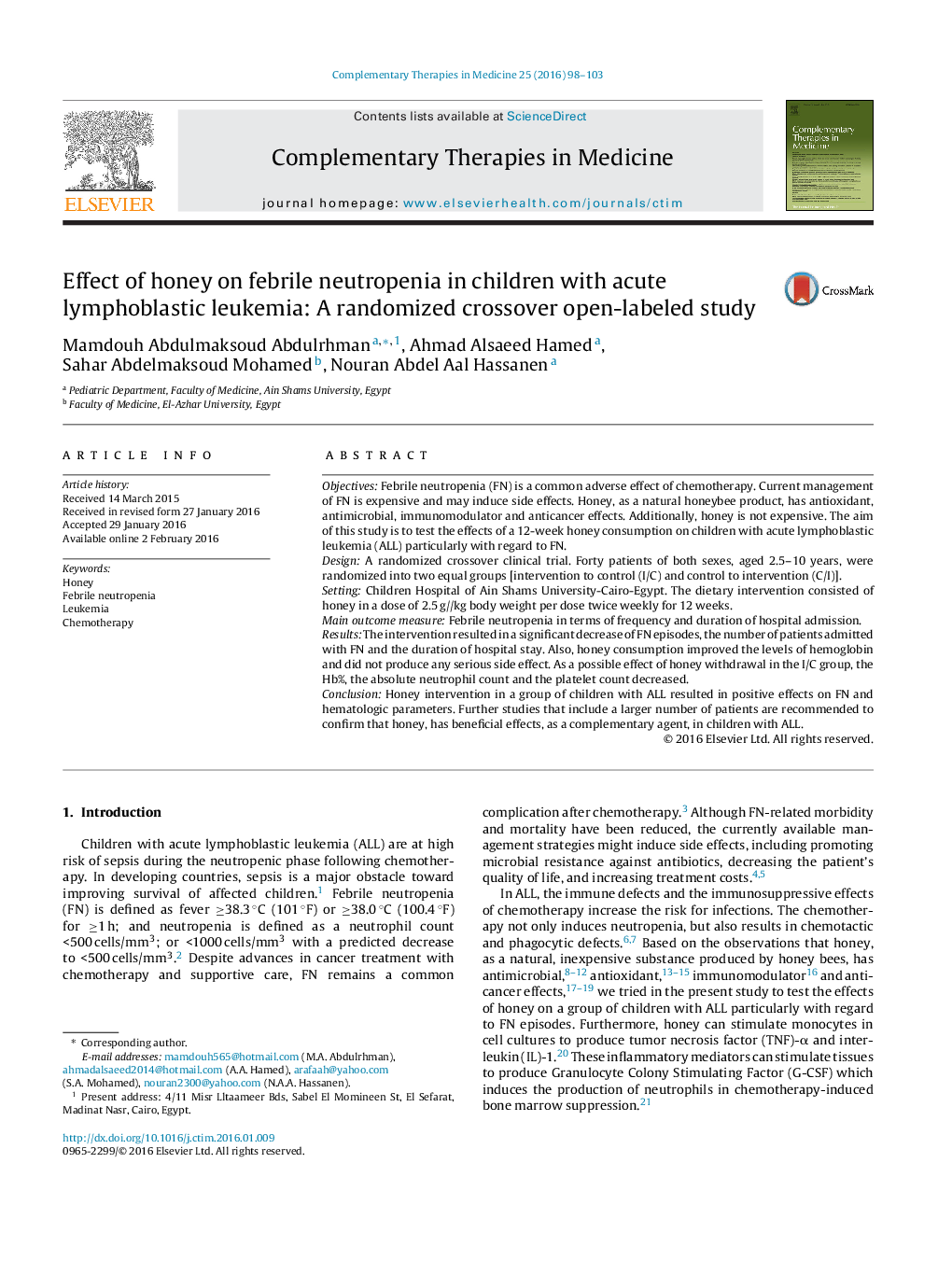| Article ID | Journal | Published Year | Pages | File Type |
|---|---|---|---|---|
| 5865446 | Complementary Therapies in Medicine | 2016 | 6 Pages |
â¢Honey may reduce the febrile neutropenia episodes in acute lymphoblastic leukemia.â¢Honey may reduce the number of patients admitted with febrile neutropenia.â¢Honey may reduce the duration of hospital stay in febrile neutropenia.â¢Honey may improve the hemoglobin and platelet count in acute lymphoblastic leukemia.â¢Honey ingestion is safe in children with acute lymphoblastic leukemia.
ObjectivesFebrile neutropenia (FN) is a common adverse effect of chemotherapy. Current management of FN is expensive and may induce side effects. Honey, as a natural honeybee product, has antioxidant, antimicrobial, immunomodulator and anticancer effects. Additionally, honey is not expensive. The aim of this study is to test the effects of a 12-week honey consumption on children with acute lymphoblastic leukemia (ALL) particularly with regard to FN.DesignA randomized crossover clinical trial. Forty patients of both sexes, aged 2.5-10 years, were randomized into two equal groups [intervention to control (I/C) and control to intervention (C/I)].SettingChildren Hospital of Ain Shams University-Cairo-Egypt. The dietary intervention consisted of honey in a dose of 2.5Â g//kg body weight per dose twice weekly for 12 weeks.Main outcome measureFebrile neutropenia in terms of frequency and duration of hospital admission.ResultsThe intervention resulted in a significant decrease of FN episodes, the number of patients admitted with FN and the duration of hospital stay. Also, honey consumption improved the levels of hemoglobin and did not produce any serious side effect. As a possible effect of honey withdrawal in the I/C group, the Hb%, the absolute neutrophil count and the platelet count decreased.ConclusionHoney intervention in a group of children with ALL resulted in positive effects on FN and hematologic parameters. Further studies that include a larger number of patients are recommended to confirm that honey, has beneficial effects, as a complementary agent, in children with ALL.
Graphical abstractDownload high-res image (166KB)Download full-size image
